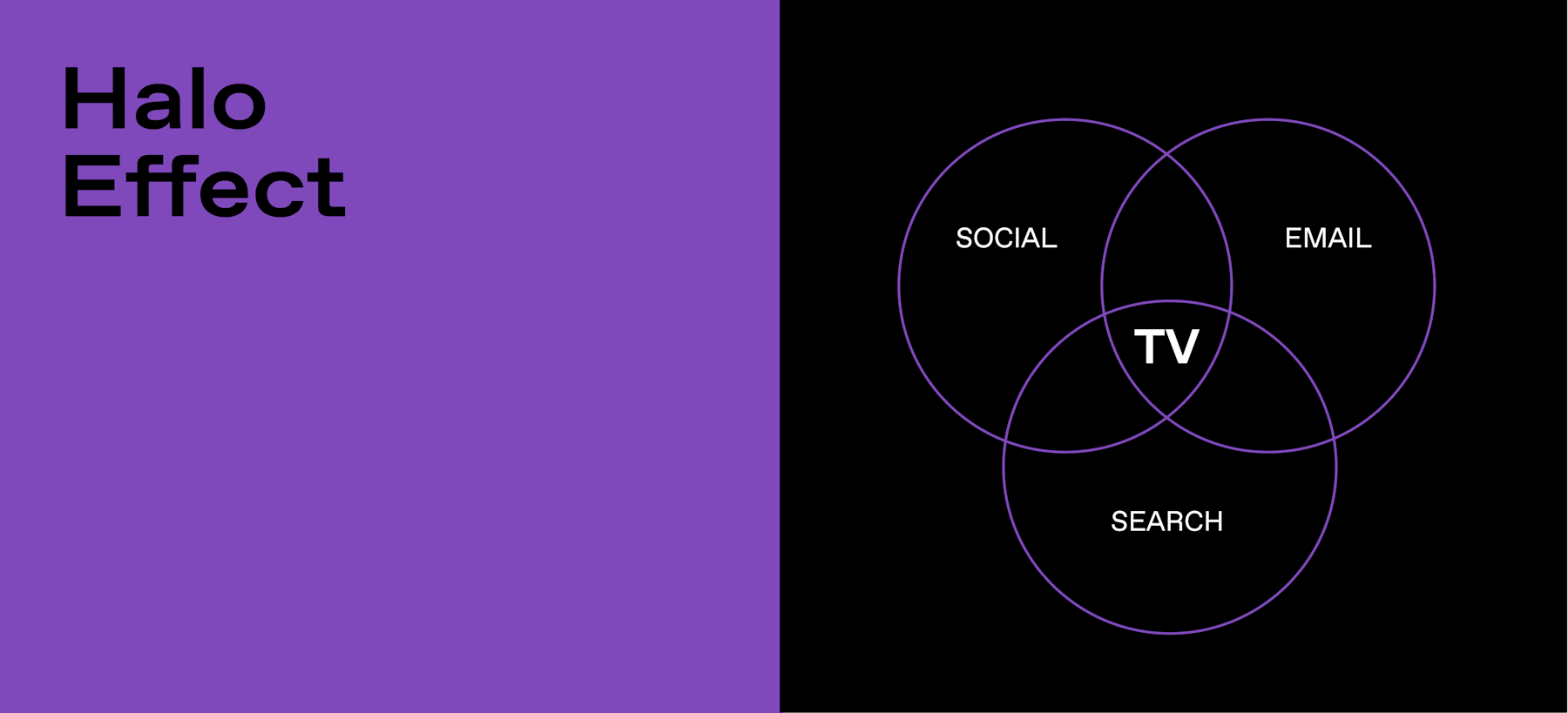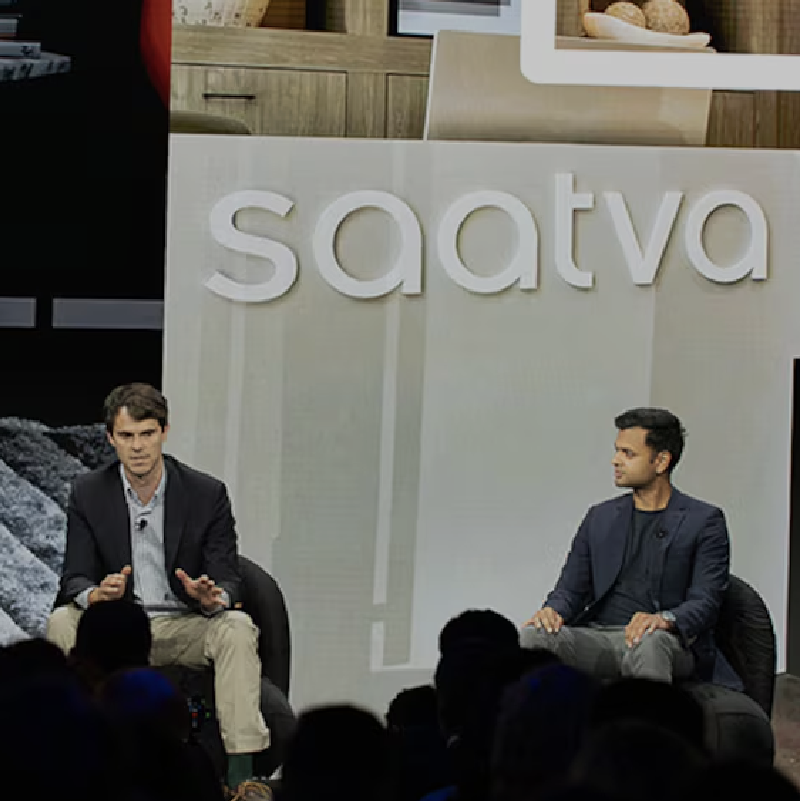
TV's Powerful Halo Effect: What It Is, How Tatari Measures It, and How You Can Harness It
A version of this was originally featured on Adexchanger.
You just launched a new campaign across multiple channels, from search to social. Going out on a limb, (perhaps even against the recommendation of your CEO or board), you’ve even included streaming TV in the mix. The creative pops, the audience is dialed in, and before long, the sales start rolling in. Thrilled with the results, you check your dashboards: clicks and conversions, oh my! And the majority of numbers are pointing to Instagram as the hero of this campaign. But dig a little deeper, and a different story starts to emerge. Those conversions? They aren’t the sole result of Instagram. Your TV ads are quietly driving the results and making other channels even better.
Enter the Halo Effect
For marketers used to precision targeting and last-click attribution on channels like social, the concept of the "halo effect" might sound unfamiliar. But in TV advertising, it is one of the most powerful, yet often overlooked, drivers of performance. It refers to the broader impact that TV has on other marketing channels - in your case the impact of TV advertising on the performance of Instagram.
In short, digital and email marketing drive many potential customers to your website, but if these visitors have recently seen a TV ad, they are much more likely to make a purchase than those who haven’t. This is more than speculation, and it’s not a small effect: more than half of Tatari’s clients see that TV ads boost purchase conversion rates of other marketing channels by more than 50%. In a world where every marketing dollar is aggressively optimized, if you’re not running TV ads, you’re missing out.
Measuring the Halo Effect
When visitors click through display, social, or email marketing to arrive at your site, some fraction of these end up making a purchase; this fraction is your incoming traffic’s conversion rate (CVR). When a company runs streaming TV ads with Tatari, we can split this marketing-sourced traffic into two groups: those who viewed a TV ad within the last seven days (Group A), and those who didn’t see the TV ad (Group B).
When we measure the CVRs of these cohorts separately, we find a striking effect: for the vast majority of our clients, the CVR of Group A is significantly higher than the CVR of Group B. In fact, among 100 brands for which we measured this effect for social marketing-driven traffic:
9 out of 10 brands saw higher CVRs from website visitors exposed to TV ads
60% of companies saw a >50% CVR lift
33% saw a lift of over 100%
Analyses of email-driven and other traffic show similarly strong results. What we find is clear: for most brands, TV ads don’t just drive direct response, they improve performance across all other marketing channels.
The Proof is in the Data
Remember that campaign you recently launched and measured, where Instagram was your apparent winner? You may be tempted (or asked!) to shift your budget out of TV and back into all your digital and social channels. But now you know that if you did that, you’d be leaving the halo effect on the table. In the modern multi-touch marketing landscape, growing your TV footprint doesn’t only increase your overall brand awareness, it also supercharges everything else. If you’re not investing in TV advertising, you're likely underperforming on every channel.
The figure demonstrates that some of the biggest boosts are seen for visitors arriving from social referrers!
In this figure, each data point represents the relative increase in conversion rate (CVR) that a Tatari client sees due to marketing-sourced website visitors having recently seen a TV ad. For example, a relative gain of 100% means that a website visitor who has seen an ad served by Tatari is twice as likely to convert than a visitor who has not seen an ad. These data points are grouped by traffic-referral source; i.e., the digital marketing channel through which visitors enter the site. The lines in each group indicate the mean and median boost calculated across all companies with that referrer type. Social and email show a consistent positive signal across many clients, while paid mobile data suggest a potentially even stronger effect, though based on less available data.
Note: the vertical scale of this figure has been chosen to show most of the observed data; however, some companies do have boost factors significantly above the displayed range, resulting in higher mean values for some of the categories.
In this figure, we show the relative conversion rate gain from TV ad viewership for each of the companies with social media traffic we used for this study. Data from nearly every company—across a wide range of industries—indicates that TV provides a significant halo effect affecting purchase behavior. While it's normal to see some statistical fluctuations, the fact that the vast majority of companies showing a positive halo effect from TV is a powerful indicator.
Harnessing the Halo Effect
Now that you know about the lift that TV can provide for all your marketing channels, how can you harness this knowledge? It’s simple: structure your TV campaign not only for performance, but also for reach. The larger audience you reach, the more likely it will be for one of your ads to hit someone who is also influenced by one of your digital channels—and to help convert that potential interest into a paying customer!
If you're serious about boosting conversions, it’s time to test TV. As the data illustrates, exposure to a TV ad can double or even triple your conversion rates. Contact us to see how we can help make TV your next growth driver.

Tim Morton
Scientist, musician, runner, and father of two. I collaborate to identify and solve challenging problems that unlock opportunities.
Related
Holiday Advertising Trends 2025: How Marketers are Planning for BFCM
We asked marketers to unwrap their plans for the holidays. Here’s what Calm, Ariat, Saatva, and others, shared about their advertising strategies to stand out during the most competitive time of the year.
Read more
How Brands are Embracing a New Playbook for TV Advertising Success
Discover how marketers are redefining TV as both a performance and brand channel, balancing linear and streaming, measuring halo effects, and making bold, data-driven bets to maximize impact.
Read more
Why Retargeting Might Be TV’s Smartest Entry Point
CTV is transforming traditional retargeting by combining the engagement of TV advertising with the precision of digital targeting, offering brands a low-risk, high-impact way to drive conversions and test a powerful new performance channel.
Read more


